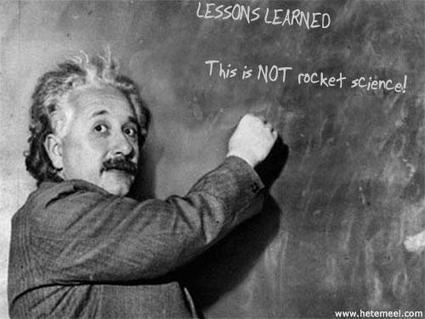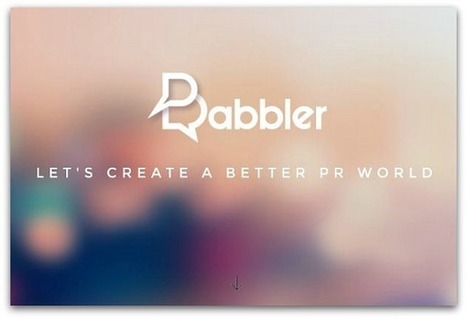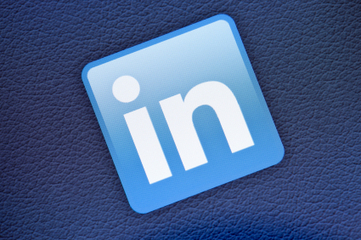 Your new post is loading...
 Your new post is loading...
In a reply to a publicist who contacted me recently on some subject or another, I surprised even myself when I wrote to her that I could not take up her pitch because she used the phrase “reaching out” in her email.
If memory serves, I actually went so far as to tell her it is my policy to say no to pitches in which the phrase “reaching out” or any of its variants is applied. It was a ridiculous, ornery reply to a well-meaning request for coverage, for which I apologize.
However, the “reaching out” phrase rankled me, and I am trying to figure out why. One reason is its overuse. This phrase -- “reaching out,” “reach out,” “reached out” or whatever form it takes -- is certainly overused in the p.r. biz today (and in many other places too)....
The prevailing wisdom in PR has been that you should keep hammering away at the key messages you're trying to get across in a media interview, no matter what.Is the reporter asking you a completely unrelated question? Doesn't matter—repeat your key message. Do they want to speak to you about an issue or topic your key messages don't even cover? Doesn't matter—repeat your key message.Is the interview a fairly relaxed conversation about your company's strategy, rather than a reputation-destroying crisis? One size fits all—just repeat your key message.If you do this enough, this line of PR thinking goes, your points will stick and the reporter will repeat them. The industry even gave this approach a name of its very own: "block (the reporter's actual question) and bridge (to your key message)." Great—except it rarely works....
We suppose it is possible for the Department of State to screw up the handling of questions about whether they lied to reporters even worse — but it is hard to figure out how. The video below from CNN’s Jake Tapper today nicely lays out the series of offenses — but here is our quick summary: In February 2013 Fox News correspondent James Rosen asked then State Department spokeswoman Victoria Nuland if there had been direct talks between the U.S. and Iran. She essentially said “NO.” In December 2013, Rosen points out to Nuland’s successor Jen Psaki that the correct answer would have been “YES” and asked if State routinely lied to reporters when they found it convenient. Psaki with a smirk said there are times when diplomacy needs privacy to succeed. (Translation: yes, we lied)....
In Iowa this evening, Donald Trump’s pre-speech press conference was rudely interrupted by immigration activist and part-time journalist, Jorge Ramos. Here’s the video.
I’ve been a staunch and relentless critic of Trump’s, and my general disapproval stands. But I have to say: He got this one right. Ramos claimed that he had a “right” to ask his question. Not really, no. Ramos certainly had a “right” to wait in line with the other journalists at the event, and he might even have had a “right” to be vexed if he’d been obviously passed over. But he certainly didn’t have a right to stand up and make a scene, nor to disrupt the proceedings for everybody else.
Having a press credential in your pocket does not entitle you to behave like Code Pink. Ramos did. Ramos was evicted. Good....
Working on a campaign outreach? To get an editor's attention, incorporate the way people think and feel.
What moves one pitch to the top of the pile? The answer can be found in psychology. Fractl collaborated with BuzzStream to apply psychological theories to the campaign outreach process. And some interesting results emerged. Below are four key takeaways to give you a more persuasive edge when you work on your next pitch....
Marketers and journalists have a long and not-always happy history. A marketer is always trying to make his or her story interesting and compelling enough to spark the interest of a journalist. The journalist, on the other hand, is always trying to separate the wheat from the chaff; only writing stories that have some intrinsic value, bring page views, or some other form of audience reaction. Journalists view it as an unfortunate part of their jobs that they must constantly poke holes in marketing or PR pitches in order to avoid unwanted puff pieces for individuals, products, or organizations.
This tension between the two sides has led to an energetic, and some would say outrageous, relationship between marketing and journalism. Still, marketers and PR folks know they must develop their relationships with journalists on a fairly constant basis in order to be successful at their work. If you are an online marketer who usually has the cyber door slammed in your face by journalists, here are a few things to consider:...
I've rarely seen someone tell their interviewer that I'm not your monkey. But it seems like filmmaker Quentin Tarantino was very tired of answering this question. Filmmaker Quentin Tarantino has been making violent (but well-received) movies for the past two decades. His latest effort, Django Unchained, is the latest in a long line of bloody films. But unlike other Tarantino movies, Django was released less than two weeks after the tragic school shooting in Newtown, Connecticut, which spurred a new national conversation about the role of violence in our culture. Given that context, it’s unsurprising that reporters would ask Tarantino about the extreme violence in his films. But it’s clear from Tarantino’s answers in this interview with Krishnan Guru-Murthy of Britain’s Channel 4 News that he was tired of answering the question. (The exchange begins at 2:40.)...
|
You’ve just delivered the perfect media response. Your answer is on message and perfectly quotable. It will accomplish everything you had hoped.
Then…you say more.
It pains me to see an answer that was brilliant in its first 15 seconds become diluted when it lasts for another minute. An extended answer also risks introducing secondary and tertiary points that offer reporters the ability to quote something relatively unimportant. And sometimes, those unnecessarily long answers lead to a “seven-second stray,” an off-message line that becomes your only quote from the interview.
When I see our trainees deliver a great answer—and then keep going—I tell them this: “When you score a touchdown, get off the field!”...
Apparently, there are 4.6 of you for every one of me, and yet most of the time, I can’t get a call back from a communications person to save my life.
I am a newspaper reporter who covers county government, but my paper is fairly loose with beat restrictions, so I also write about a lot of random things that interest me (recent examples: the plight of the public-health dentist, employee retention rates in law enforcement).
Writing outside of my beat requires that I spend a healthy chunk of my daily reporting life reaching out to PR pros, the vast – vast – majority of whom refuse to communicate with me.
It happens often enough that I cringe when I have to contact a rep I don’t know, because it almost always results in me sitting at my desk moaning, “But I’m a nice person!” while staring at the phone and hitting refresh on my inbox. (You may notice those two stories above do not quote a representative from a state or national agency. This is not for lack of trying.)...
Previously available only in France, Babbler already boasts “300 customers worldwide and 5,000 reporters that use it everyday” in that country.
On Tuesday, the organization announced that it’s available to PR pros and reporters in the United States.
Here’s the selling point for the network, said via press release:
Babbler helps create, manage and engage media communities by providing them the best way to interact with their network of sources, content, and story ideas, all in one place....
It was unbelievable news. And reporters shouldn’t have believed it.It turns out that the Institute of Diet and Health is just a Web site with no institute attached.
Johannes Bohannon, health researcher and lead author of the study, is really John Bohannon, a science journalist. And the study, while based on real results of an actual clinical trial, wasn’t aimed at testing the health benefits of chocolate. It was aimed at testing health reporters, to see if they could distinguish a bad science story from a good one.In many cases, they couldn’t....
Never leave a reporter hanging—especially one who's ready to write about your company. One of the simplest ways to please any journalist, blogger, or even potential investor, is to have a easy-to-find press kit on your site.
"The goal of a press kit is the same as public relations—make it easy to tell the story," says Jordan Lampe, director of communications at payments company Dwolla. He's helped land the startup on the front pages of the New York Times and the MIT Technology Review....
There is an ongoing conversation among communications and SEO professionals, alike, about the value of using news releases to boost your online visibility. While there are SEO benefits, publishing news releases plays numerous other marketing roles. The rules, purpose, and audience have changed. It’s time to update how we think about them, write them, and measure their results in order to get the most online visibility value from them. There are three very distinct reasons to not only write a news release, but to publish and distribute it online....
Lori Russo and Krista Canfield offer seven tips and tricks for leveraging LinkedIn to communicate with journalists. In a recent PR News article, we mentioned that LinkedIn has become the most-used social network by journalists—92% are on LinkedIn. As PR professionals, you are probably trying to figure out what to do with that astounding statistic, but don't worry—we're here to help. These tips, courtesy of Lori A. Russo, managing director of Stanton Communications, and Krista Canfield, senior manager, corporate communications, LinkedIn, offer advice on how to leverage this valuable communications platform and successfully find and communicate with journalists.... [Practical media relations tips worth noting - JD]
|



 Your new post is loading...
Your new post is loading...





















Adam Buckman slays another tired bromide by lazy PR people who keep "reaching out" or wanting to "chat."